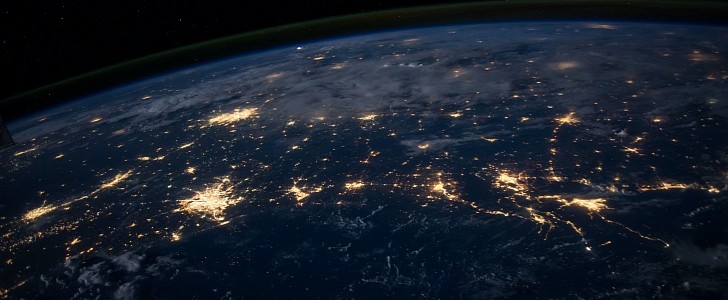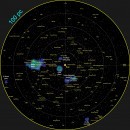It is quite arrogant of us to think we’re the only beings to populate this vast Universe. So it is only logical to assume that just as we are constantly searching for alien lifeforms, so are they. In fact, research reveals that aliens could have been observing us for the last past 5,000 years.
While it is hard to find a good enough reason why an alien life form would find us earthlings worthy of observation, turns out it is entirely possible. A study led by astronomer Lisa Kaltenegger at the Cornell University shows that there are over 1,700 stars from which alien civilizations could observe our planet since the beginning of human civilization, 5,000 years ago.
Those stars are within approximately 300 light-years from us and have been in the sweet spot for the past 5,000 years. That means they were in Earth’s Transit Zone (ETZ) and could see our planet transiting our Sun. Over 300 more stars will enter this area in the next 5,000 years.
Of all the identified stars, 75 are closer than 100 light-years, so from those, they can even detect us by the radio signals we emit. Going even further on the thread, over 500 of them are habitable exoplanets within 300 light-years or closer. On the other hand, a large number of those stars are inhabitable due to excessive radiation.
Kaltenegger explained that the universe is dynamic and constantly in motion and the cosmic front seat to see our planet as a transiting planet can be gained and lost. The purpose of her team’s study was to see which stars had that vantage point, for how long, and which stars are yet to gain it.
The astronomers used in their research the data provided by the Gaia Catalog of Nearby Stars (GCNS) from the European Space Agency (ESA). It is the largest 3D space catalog ever made, including around one billion astronomical objects such as asteroids, planets, and stars.
Those stars are within approximately 300 light-years from us and have been in the sweet spot for the past 5,000 years. That means they were in Earth’s Transit Zone (ETZ) and could see our planet transiting our Sun. Over 300 more stars will enter this area in the next 5,000 years.
Of all the identified stars, 75 are closer than 100 light-years, so from those, they can even detect us by the radio signals we emit. Going even further on the thread, over 500 of them are habitable exoplanets within 300 light-years or closer. On the other hand, a large number of those stars are inhabitable due to excessive radiation.
Kaltenegger explained that the universe is dynamic and constantly in motion and the cosmic front seat to see our planet as a transiting planet can be gained and lost. The purpose of her team’s study was to see which stars had that vantage point, for how long, and which stars are yet to gain it.
The astronomers used in their research the data provided by the Gaia Catalog of Nearby Stars (GCNS) from the European Space Agency (ESA). It is the largest 3D space catalog ever made, including around one billion astronomical objects such as asteroids, planets, and stars.







